Articles > Geography
Trying the top The Largest Cities In Texas cities on US State Largest Cities – Choose State & Number? Here are the top 10 to get you started.
1. Houston, TX (Population: 2,314,157)
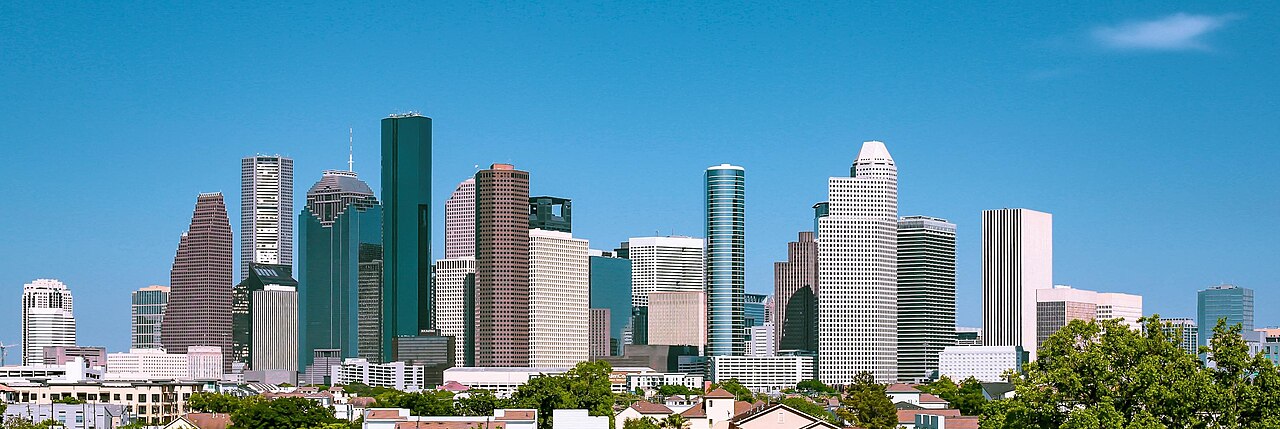
Houston is the largest city in Texas and one of the most diverse metros in the United States. Its economy is anchored by energy, aerospace, healthcare, and the Port of Houston—one of the nation’s busiest. Houston is home to the Texas Medical Center, the world’s largest medical complex, and NASA’s Johnson Space Center, where astronauts train. Neighborhoods like Montrose, the Heights, and Midtown showcase thriving arts scenes, while the Museum District features institutions such as the MFAH and the Houston Museum of Natural Science. Green spaces like Buffalo Bayou Park and Hermann Park weave outdoor life into the city’s fabric. Food is a major part of Houston’s identity, with everything from Viet-Cajun to Tex-Mex reflecting its global population. Professional sports, world-class performing arts, and a steady stream of festivals round out the appeal of this dynamic Gulf Coast city.
Interesting Fact: More than 145 languages are spoken in Houston, making it one of the most linguistically diverse cities in the country.
2. San Antonio, TX (Population: 1,495,295)
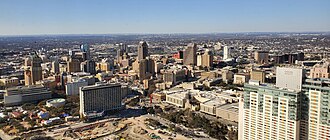
San Antonio blends deep history with modern growth. The city’s Spanish colonial roots are preserved at the Alamo and the San Antonio Missions, a UNESCO World Heritage Site. The River Walk—lined with restaurants, shops, and public art—winds through the heart of downtown and anchors a robust tourism economy. Beyond hospitality, San Antonio’s growth is powered by cybersecurity, bioscience, manufacturing, and military installations such as Joint Base San Antonio. Distinct neighborhoods—Pearl District, Southtown, and King William—offer farmers markets, galleries, and adaptive reuse of historic spaces. Fiesta San Antonio celebrates local culture every spring with parades and community events. Families enjoy the San Antonio Zoo and nearby theme parks, while outdoor lovers head to the Hill Country for hiking and tubing.
Interesting Fact: San Antonio’s five historic missions collectively form the only UNESCO World Heritage Site in Texas.
3. Dallas, TX (Population: 1,302,868)
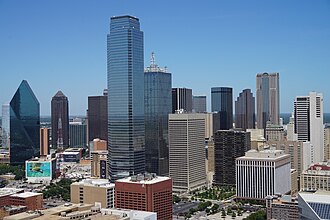
Dallas is a financial and corporate hub at the center of a sprawling North Texas economy. Its skyline—topped by Reunion Tower and Bank of America Plaza—frames neighborhoods ranging from lively Deep Ellum to elegant Uptown and the Arts District, the largest contiguous urban arts district in the U.S. Major museums include the Dallas Museum of Art, the Nasher Sculpture Center, and the Perot Museum of Nature and Science. Dallas’ business base spans banking, telecom, tech, and logistics, bolstered by proximity to Dallas Love Field and DFW International Airport. The city’s food scene runs from Texas barbecue to global cuisine, reflecting a fast-growing, multicultural population. Green spaces like Klyde Warren Park stitch together downtown districts and host festivals and fitness events.
Interesting Fact: The Dallas Arts District covers 68 acres, housing multiple world-class venues within a walkable few blocks.
4. Austin, TX (Population: 979,882)

Austin, the Texas capital, is famed for live music, tech innovation, and outdoor living. Major festivals—SXSW and ACL—draw global audiences, while venues along Sixth Street, South Congress, and the Red River District keep music front and center year-round. The city’s economy is driven by software, semiconductors, and emerging AI firms, complemented by the University of Texas at Austin’s research and talent pipeline. Lady Bird Lake trails, Barton Springs Pool, and the Barton Creek Greenbelt offer abundant recreation minutes from downtown. Distinct neighborhoods—from East Austin’s murals and eateries to South Congress’ boutiques—showcase the city’s creative energy. A strong startup scene and a collaborative culture make Austin a magnet for entrepreneurs and artists alike.
Interesting Fact: Austin bills itself as the “Live Music Capital of the World,” with hundreds of venues hosting performances weekly.
5. Fort Worth, TX (Population: 978,468)
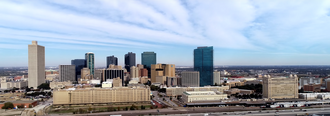
Fort Worth blends cattle-town heritage with modern culture. The Fort Worth Stockyards—complete with daily cattle drives—preserve its cowboy past, while the Cultural District features the Kimbell Art Museum, Amon Carter Museum of American Art, and the Modern Art Museum. Sundance Square anchors a revitalized downtown with performance spaces, restaurants, and public art. Aviation and defense play a major role in the local economy, alongside logistics and advanced manufacturing. The Trinity Trails network supports cycling and running across miles of riverfront paths, and the city’s calendar is filled with rodeos, concerts, and festivals. Fort Worth’s distinct identity complements neighboring Dallas, giving the Metroplex two vibrant, but different, urban cores.
Interesting Fact: The Kimbell Art Museum’s Louis I. Kahn–designed building is considered a masterpiece of natural-light architecture.
6. El Paso, TX (Population: 678,958)
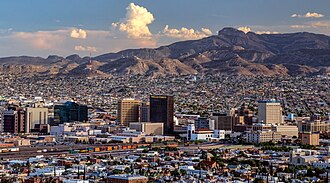
El Paso sits along the Rio Grande at the U.S.–Mexico border, forming a binational metro with Ciudad Juárez. The Franklin Mountains rise directly from the city, placing hiking and desert vistas within minutes of downtown. El Paso’s economy includes defense, manufacturing, healthcare, and cross-border trade, supported by Fort Bliss—one of the largest U.S. Army posts. Downtown has seen a renaissance with restored theaters, new hotels, and the San Jacinto Plaza. The city’s cuisine blends Mexican and Texan traditions, with beloved staples like gorditas and stacked enchiladas. Cultural institutions—from the El Paso Museum of Art to annual mariachi and folklórico festivals—reflect a rich borderlands heritage.
Interesting Fact: Franklin Mountains State Park within El Paso city limits is one of the largest urban parks in the United States.
7. Arlington, TX (Population: 398,431)
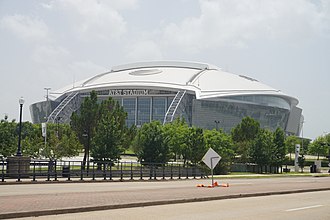
Arlington, set between Dallas and Fort Worth, is a major destination for sports and entertainment. AT&T Stadium (Dallas Cowboys) and Globe Life Field (Texas Rangers) draw millions of fans, while the adjacent Entertainment District includes Texas Live! and theme parks like Six Flags Over Texas and Hurricane Harbor. The University of Texas at Arlington adds a strong academic presence and research activity. Arlington’s economy benefits from tourism, retail, manufacturing, and logistics, aided by central Metroplex access. City initiatives continue to add trails, parks, and mixed-use districts that enhance quality of life for residents and visitors alike.
Interesting Fact: AT&T Stadium’s retractable roof and massive center-hung video board made it the world’s largest enclosed NFL stadium when it opened.
8. Corpus Christi, TX (Population: 316,595)
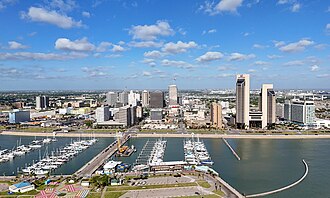
Corpus Christi anchors Texas’ Coastal Bend with beaches, a deep-water port, and strong ties to energy and petrochemicals. North Beach attractions include the USS Lexington Museum and the Texas State Aquarium, while Mustang and Padre Islands provide miles of coastline for surfing, fishing, and birding. The Port of Corpus Christi is among the nation’s leaders in crude oil exports, driving logistics and industry. Downtown revitalization has brought new restaurants, waterfront trails, and festivals, and Texas A&M University–Corpus Christi contributes research and a steady student presence. With sea breezes, coastal cuisine, and easy access to barrier islands, the city offers a distinctive Gulf lifestyle.
Interesting Fact: Padre Island National Seashore near Corpus Christi is the world’s longest undeveloped barrier island.
9. Plano, TX (Population: 290,190)
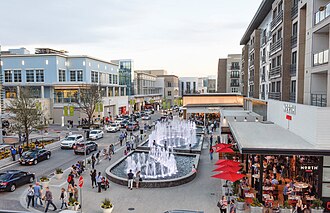
Plano evolved from farmland into a corporate powerhouse within the Dallas–Fort Worth region. Numerous Fortune 500 and global firms maintain headquarters or major campuses here, fueling a highly skilled workforce. Legacy West and The Shops at Legacy form a walkable core of offices, dining, and residences, while the city’s park system and nature preserves add balance to fast-paced growth. Excellent schools, public safety, and amenities consistently earn Plano high livability marks. Food options range from upscale steakhouses to global eateries, reflecting a diverse population. With strong infrastructure and a pro-business environment, Plano remains one of the most desirable suburban cities in the country.
Interesting Fact: Plano’s Legacy West development is one of the largest mixed-use projects in North Texas, spanning more than 250 acres.
10. Lubbock, TX (Population: 266,878)
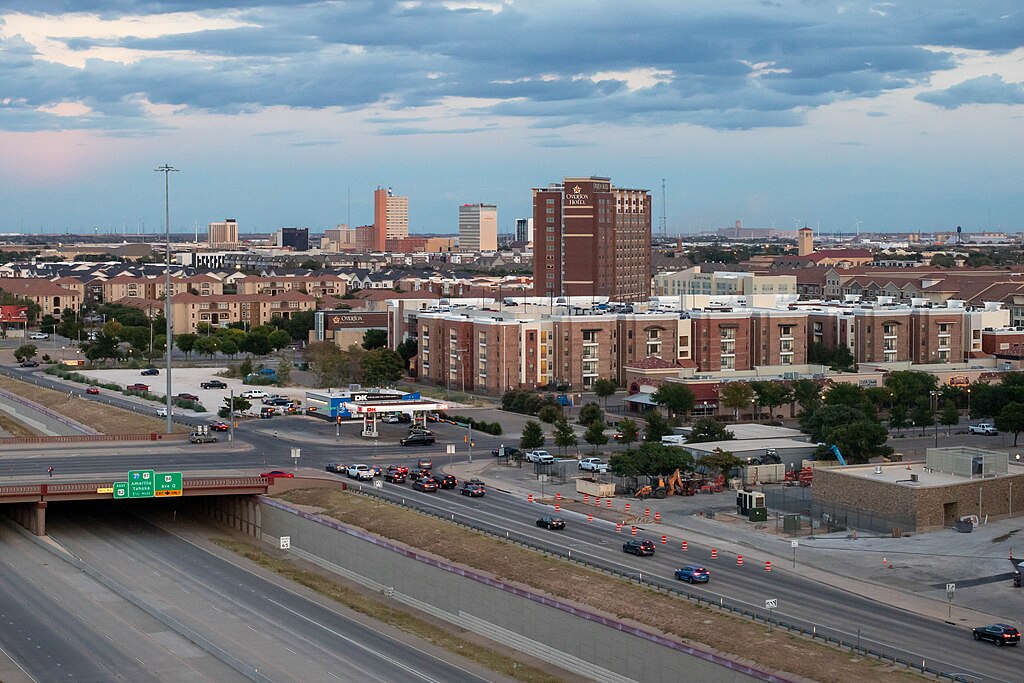
Lubbock, the “Hub City” of West Texas, serves as a regional center for education, agriculture, and healthcare. Texas Tech University drives research, athletics, and cultural life, from Red Raider football at Jones AT&T Stadium to performances at the Museum of Texas Tech and the Buddy Holly Hall. The city’s economy blends higher education with cotton, wine production on the High Plains, and a growing medical sector. Lubbock’s music legacy runs deep—native son Buddy Holly helped shape early rock ’n’ roll—and the city honors him with a museum and statues downtown. Wide-open skies, craft breweries, and an increasingly vibrant food scene give Lubbock a welcoming, collegiate energy.
Interesting Fact: The Texas High Plains AVA around Lubbock produces the majority of Texas wine grapes thanks to its elevation and dry climate.




